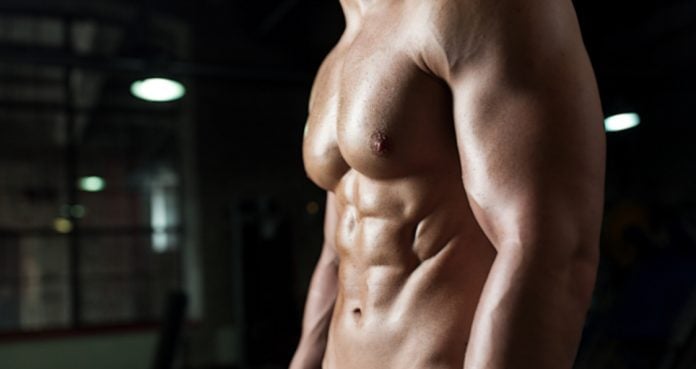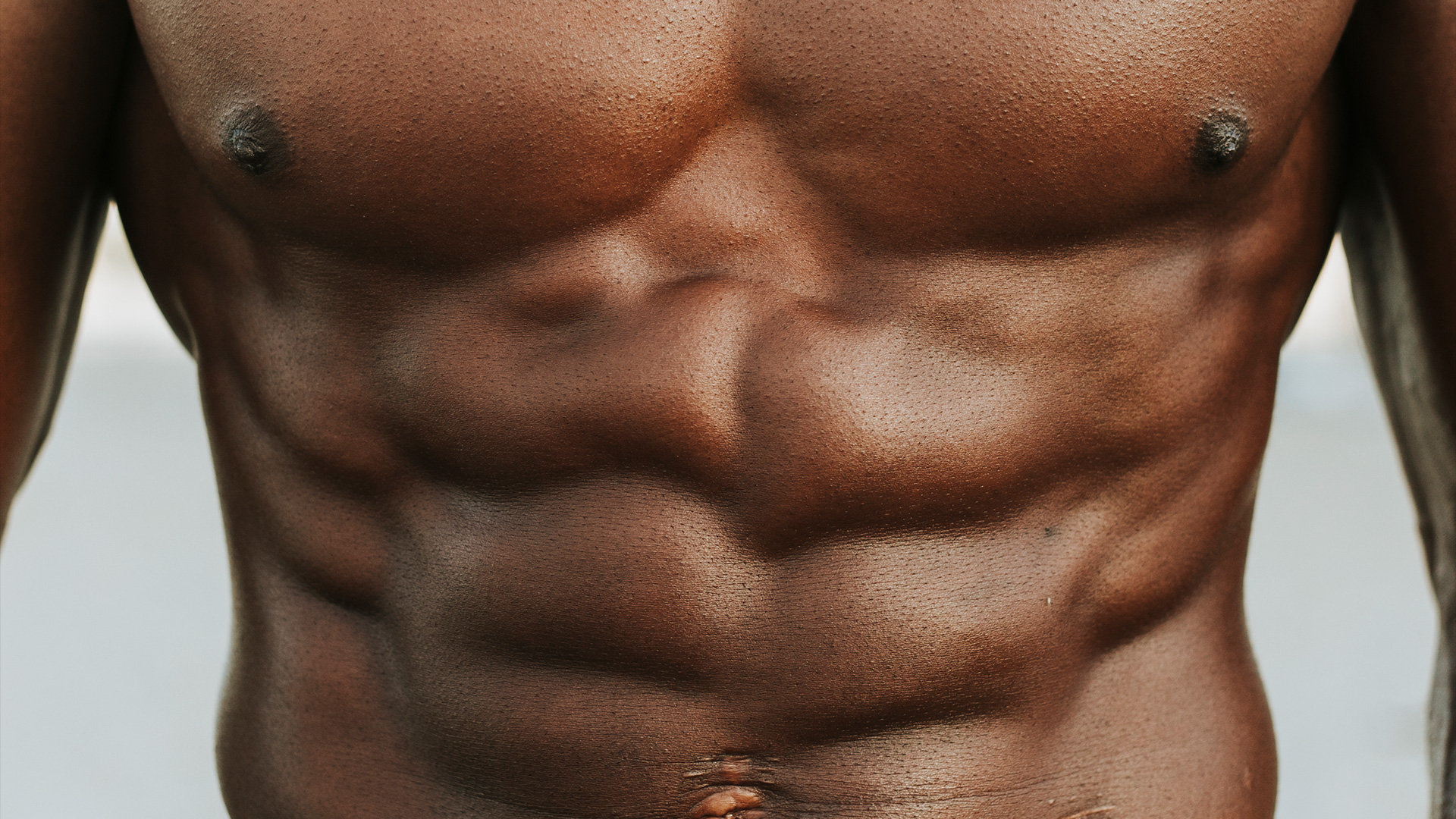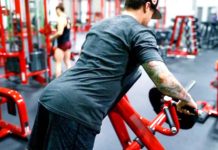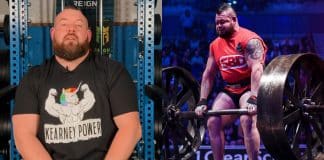
8 Underrated Methods That Will Transform Your Ab Training
When it comes to ab training there are many different methods in existence. In the pursuit of strong, well-defined abdominals, most individuals concentrate on one specific method.
Some individuals will look at isometric exercises where they remain entirely rigid, others will focus on exercises that move the limbs in a variety of different ways.
Still others believe that weight machines are the way forward while some argue that bodyweight is all that is required for efficient abdominal development.
Regardless of which method you believe to be best, everyone can benefit from learning new abdominal training techniques in order to comprehensively develop the abs.
This article will provide you with 8 ab training secrets that can transform your training and bring about significant improvements in abdominal strength and definition.
8 Abdominal Training Secrets
Before looking at the 8 underrated abs techniques, it must be emphasized that while training these muscles may build strength and improve muscle tone, they will not give you a six-pack (1).
This can only be achieved by restricting calories so that body fat is reduced to the point where the muscles become visible. (2)
While it is clear that it is proper nutrition that will reveal the abdominal muscles, it is still important that we train the abdominal muscle group regularly.
1) Round The Back
For almost every single resistance exercise, rounding the back is something that is to be avoided. In fact, it’s likely that you’ve spent much time teaching yourself how to keep the spine neutral.
It is absolutely imperative that the spine is neutral during exercises like deadlifts, squats, rows and any bent-over exercises. It is done in order to prevent injury occurring to the spine.
For exercises that target the abdominals however, you may have to unlearn this skill as maintaining a flat back will limit the degree of abdominal contraction.
It’s not uncommon to see gym-goers performing exercises, like the cable crunch, with a flat back which causes them to bend at the hips rather than the waist.
By bending at the waist, the rectus abdominis shortens and fully contracts whereas bending at the hips causes an isometric contraction and the abdominals remain the same length.
You may have heard it said that spinal flexion exercises are risky, however, often the risk is overstated. Your spine is designed to bend and therefore, exercises like crunches are entirely legitimate.
Simple crunches will not cause lower back pain if performed properly, however, performing the same abdominal workout for months and months may cause overuse injuries or low back problems.
Therefore, variety is extremely important for abdominal training. Ensure to add in some sagittal and lateral abdominal work as well as performing crunches.
2) Target Specific Areas
Isolation exercises can be useful when it comes to developing the abdominals. An isolation exercise is simply an exercise that entirely focuses on working one muscle.
While it may not be entirely possible to isolate particular portions of certain muscles, it is possible to emphasize one area over another.
Core training tends over the past few years have revolved around developing the core overall with a particular focus on the transverse abdominis.
While this is undoubtedly a good focus to have, there is value in targeting the upper and lower portions of the abdominals.
For the upper areas, use exercises that stabilize the lower body and focus on curling the back so that the ribcage is pulled down towards the hips.
To effectively target the lower areas, flip it around. Stabilize the upper body and bring the pelvis up towards the ribcage.
The cable crunch is an example of an effective “upper ab” exercise whereas a hanging leg raise serves a great example of a “lower ab” exercise.
A few ab exercises actually involve the pelvis and ribs move towards each other simultaneously to bring about a peak abdominal contraction. This type of exercise targets the upper and lower abs equally.
Finally, all exercises which involve twisting, rotation or lateral movement will effectively work the oblique muscles. Side bends are a great example of an effective oblique-focused exercise.
3) Use Progressive Overload
When performing ab routines most individuals use the same amount of sets, reps, and weight every time.
The problem with this is that the muscles have adapted to the point that they comfortably deal with the stress of this workout, therefore, they fail to adapt further.
Consider the other work you do in the gym. With heavy lifting, you are always aspiring to improve by lifting heavier or for a greater total volume. The same principle should apply to your ab training.
Progressive overload is the process of gradually adding more load over time to ensure that the body continually adapts. It is absolutely foundational to all strength training (3).
When considering ab training, you should program, execute and apply progressive overload in the same way as you would with other resistance exercises.
Here are the 3 most common methods of applying progressive overload:
– Increasing the weight
– Increasing total volume (sets x reps)
– Reducing rest periods
Look to improve in one variable at a time and ensure that the increments are gradual. Focusing on all three and overloading too quickly will more than likely cause regression rather than progression.
 4) Start with Loaded Resistance
4) Start with Loaded Resistance
The abdominals are primarily made up of slow-twitch muscle fiber (4) which are particularly resistant to fatigue, however, this should not mean that you use high-reps only.
Although there is a greater percentage of slow-twitch, the abdominal region also contains many fast-twitch fibers that respond best to low-to-moderate rep ranges.
Keeping this in mind, to develop these fast-twitch it may be useful to start your routines with weighted ab exercises using a low-to-moderate rep range.
A useful recommendation is to use a weight that brings you to the point of muscular failure while still allowing you to perform 8-12 reps.
If using bodyweight exercises, you can still increase this resistance by manipulating your body position. The best examples of this are seen in ab / TRX rollouts.
5) Use Holds
Peak-contraction training involves consciously squeezing the muscle at the top of the rep for a short period of time. Adding this method to a number of ab exercises can increase the overall intensity.
Let’s say you can comfortably complete 12 reps of the hanging leg raise. Adding a 1-second hold at the top of the leg raise will suddenly make the 12 reps feel much more challenging.
By using the peak-contraction technique you may find that you perform fewer reps than before simply because the muscles are put under a greater load – this is totally fine.
Remember that movement quality and exercise intensity are much more important than reaching a predetermined rep target.
6) Maintain Time Under Tension
When using machines, if the weight makes contact with the stack, muscle tension immediately dissipates and the training stimulus disappears.
While it may be evident when this occurs with machine-based exercises, it may be less clear with bodyweight exercises.
During all bodyweight exercises which involve lying flat on your back, look to keep the shoulder blades off the floor as resting them on the floor will reduce the time under tension.
Again, don’t concern yourself too much with the number of reps you perform, instead, focus on maintaining muscle tension throughout the exercise.
7) Be Aware of Your Hip Flexors
The hip flexors are the muscle group responsible for generating movement around the hips, as the name suggests. For a number of exercises it is possible to work the hip flexors instead of the lower abs.
An exercise where this is commonly seen is the hanging leg raise. During the leg lift, if the lower back remains entirely flat, it is likely that the hip flexors are doing the work.
For exercises that involve anchoring the lower body, it is also possible to drive through the thigh muscles rather than engage the abdominals to pull the torso up.
Often, the hip flexors will become too heavily recruited when exercise technique is incorrect or less than optimal. Therefore, it is important to assess your technique regularly.
8) The Importance of the Plank
The plank plays a part in many gym-goers ab workouts – and rightly so! It is one of the best core exercises for strength, stability, and function.
Let’s consider the movement patterns and requirements for a number of heavy compound lifts – deadlifts, squats, bench, bent rows, overhead presses and so on.
Bracing and maintaining a strong torso is pivotal to all of these exercises and certain points of specific exercises actual resemble a plank and activate ab muscles in a similar fashion (5).
Therefore, developing planking and bracing abilities can have a positive impact on your performance with other resistance-based exercises.
Check out our Abs Exercise Guide here for exercises and further instructions.
Final Word
Abdominal training does not have to be boring or mundane. Utilizing these methods, varying your abdominal workout on occasion and effectively applying progressive overload will yield excellent results.
References:
1-Vispute, Sachin S.; Smith, John D.; LeCheminant, James D.; Hurley, Kimberly S. (2011-09). “The effect of abdominal exercise on abdominal fat”. Journal of Strength and Conditioning Research. 25 (9): 2559–2564. doi:10.1519/JSC.0b013e3181fb4a46. ISSN 1533-4287. PMID 21804427.
2-Redman, Leanne M.; Ravussin, Eric (January 15, 2011). “Caloric Restriction in Humans: Impact on Physiological, Psychological, and Behavioral Outcomes”. Antioxidants & Redox Signaling. 14 (2): 275–287. doi:10.1089/ars.2010.3253. ISSN 1523-0864. PMC 3014770. PMID 20518700.
3-Lorenz, Daniel S.; Reiman, Michael P.; Walker, John C. (2010-11). “Periodization”. Sports Health. 2 (6): 509–518. doi:10.1177/1941738110375910. ISSN 1941-7381. PMC 3438871. PMID 23015982.
4-Häggmark, T.; Thorstensson, A. (1979-12). “Fibre types in human abdominal muscles”. Acta Physiologica Scandinavica. 107 (4): 319–325. doi:10.1111/j.1748-1716.1979.tb06482.x. ISSN 0001-6772. PMID 161688.
5-van den Tillaar, Roland; Saeterbakken, Atle Hole (June 13, 2018). “Comparison of Core Muscle Activation between a Prone Bridge and 6-RM Back Squats”. Journal of Human Kinetics. 62: 43–53. doi:10.1515/hukin-2017-0176. ISSN 1640-5544. PMC 6006542. PMID 29922376.


 4) Start with Loaded Resistance
4) Start with Loaded Resistance












